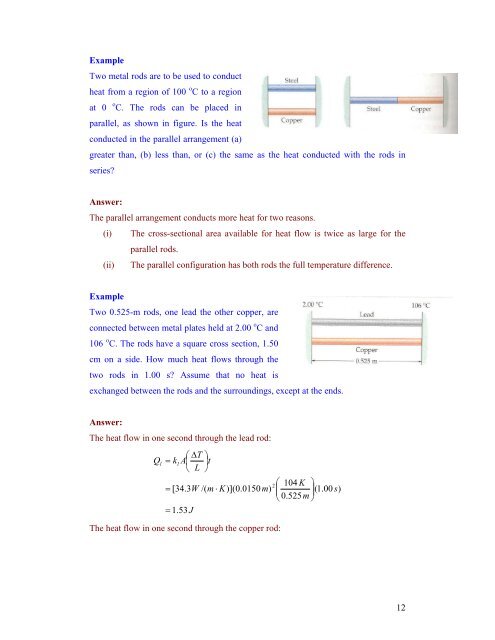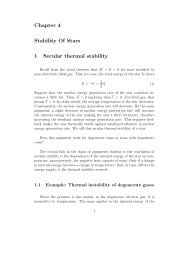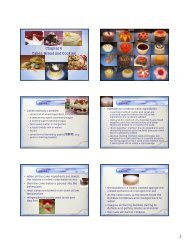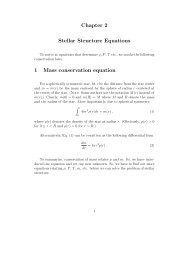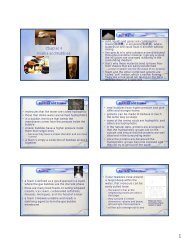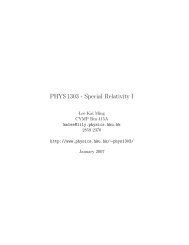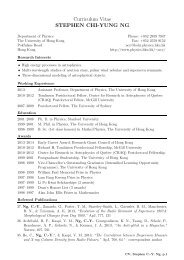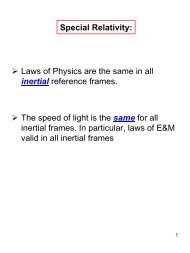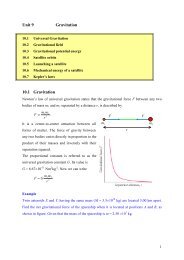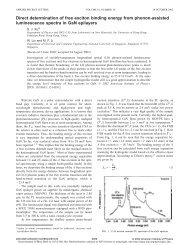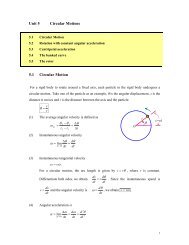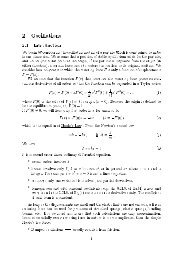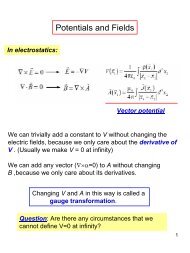Thermal Behavior of Matter and Heat Engines - Department of ...
Thermal Behavior of Matter and Heat Engines - Department of ...
Thermal Behavior of Matter and Heat Engines - Department of ...
You also want an ePaper? Increase the reach of your titles
YUMPU automatically turns print PDFs into web optimized ePapers that Google loves.
Example<br />
Two metal rods are to be used to conduct<br />
heat from a region <strong>of</strong> 100 o C to a region<br />
at 0 o C. The rods can be placed in<br />
parallel, as shown in figure. Is the heat<br />
conducted in the parallel arrangement (a)<br />
greater than, (b) less than, or (c) the same as the heat conducted with the rods in<br />
series?<br />
Answer:<br />
The parallel arrangement conducts more heat for two reasons.<br />
(i) The cross-sectional area available for heat flow is twice as large for the<br />
parallel rods.<br />
(ii) The parallel configuration has both rods the full temperature difference.<br />
Example<br />
Two 0.525-m rods, one lead the other copper, are<br />
connected between metal plates held at 2.00 o C <strong>and</strong><br />
106 o C. The rods have a square cross section, 1.50<br />
cm on a side. How much heat flows through the<br />
two rods in 1.00 s? Assume that no heat is<br />
exchanged between the rods <strong>and</strong> the surroundings, except at the ends.<br />
Answer:<br />
The heat flow in one second through the lead rod:<br />
Q<br />
l<br />
⎛ ∆T<br />
⎞<br />
= kl<br />
A⎜<br />
⎟t<br />
⎝ L ⎠<br />
2<br />
⎛ 104 K ⎞<br />
= [34.3W<br />
/( m ⋅ K)](0.0150<br />
m)<br />
⎜ (1.00 s)<br />
0.525m<br />
⎟<br />
⎝ ⎠<br />
= 1.53 J<br />
The heat flow in one second through the copper rod:<br />
12


